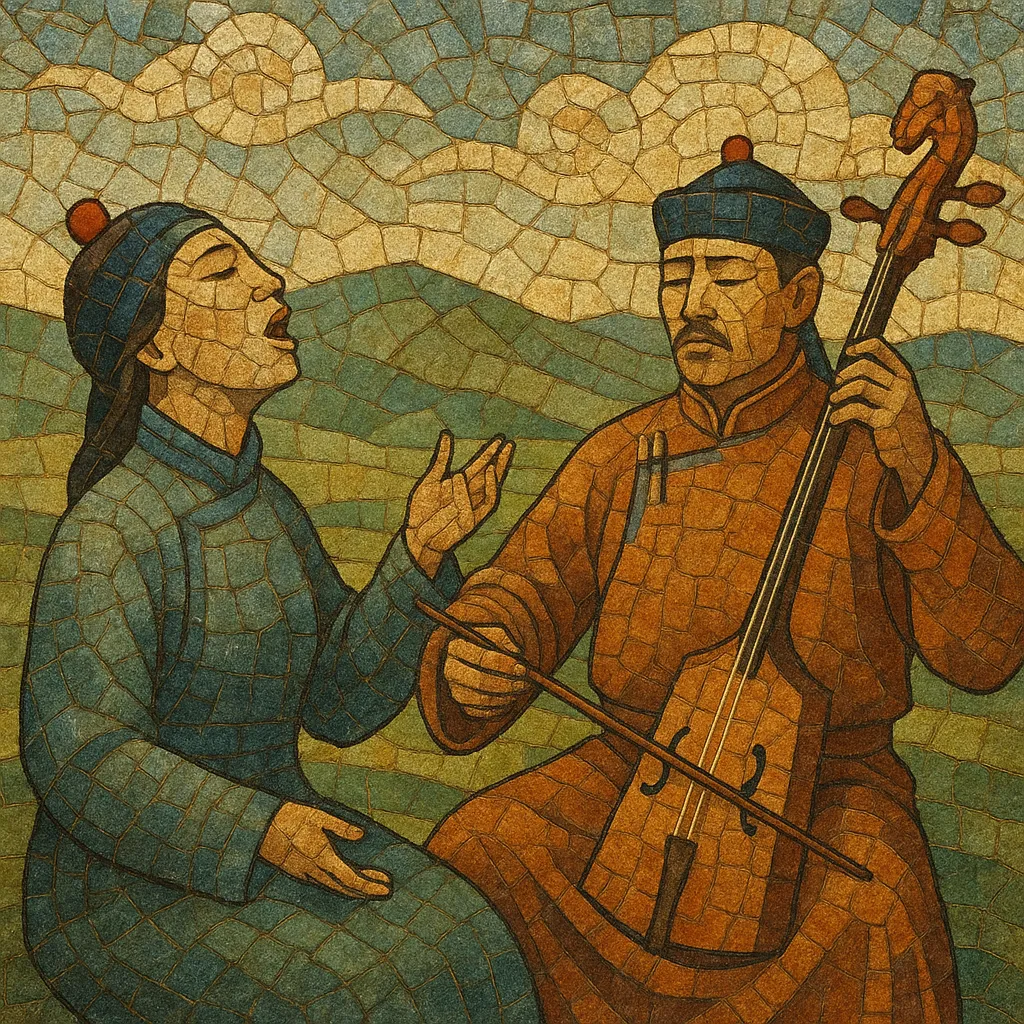Urtiin duu (Mongolian long song) is a traditional Mongolian vocal genre characterized by extremely long, sustained syllables, wide melodic leaps, and richly ornamented, melismatic lines.
It is usually performed solo with free, rubato timing and accompanied by the morin khuur (horse-head fiddle), although unaccompanied renditions also exist. The term "long" refers to the prolonged duration of sung syllables and the expansive melodic lines rather than to the length of the piece itself.
The melodies often use pentatonic frameworks, expansive ranges, and expressive techniques such as portamento, glissandi, and subtle microtonal inflections to evoke the vastness of the steppe, horses, and nomadic life. Urtiin duu is a pillar of Mongolian musical identity and has been recognized by UNESCO as part of the Intangible Cultural Heritage of Humanity.
Urtiin duu is believed to date back to the era of the Mongol Empire (13th century), emerging from nomadic steppe culture where singing carried over great distances and articulated communal memory. Its free rhythm, sustained tones, and expansive intervals reflect the sonic and symbolic aesthetics of the steppe landscape, horsemanship, and pastoral life.
For centuries, long song functioned in festive, ceremonial, and social contexts, including Naadam celebrations and life-cycle events. It circulated primarily through oral transmission, with masters teaching apprentices. Regional styles developed among Khalkha Mongols and in related Mongolic communities (e.g., Buryat and Kalmyk), creating a family of long-song practices sharing core techniques but differing in dialect, ornamentation, and preferred tessitura.
The 20th century saw both professionalization (state ensembles, conservatory training) and periods of pressure on traditional practices. From the late 20th century onward, cultural policy shifts, scholarly documentation, and international interest spurred revitalization. Recording technologies and festivals helped standardize repertory and technique without erasing local nuance.
Urtiin duu has been recognized by UNESCO as Intangible Cultural Heritage, elevating safeguarding efforts. Contemporary performers maintain classical techniques while collaborating with morin khuur ensembles and crossing into world-music, film, and concert settings. Despite new stages and media, the genre’s essence remains: highly controlled breath, free rhythm, and ornamented, long-lined melodies that give voice to the steppe and nomadic poetics.


